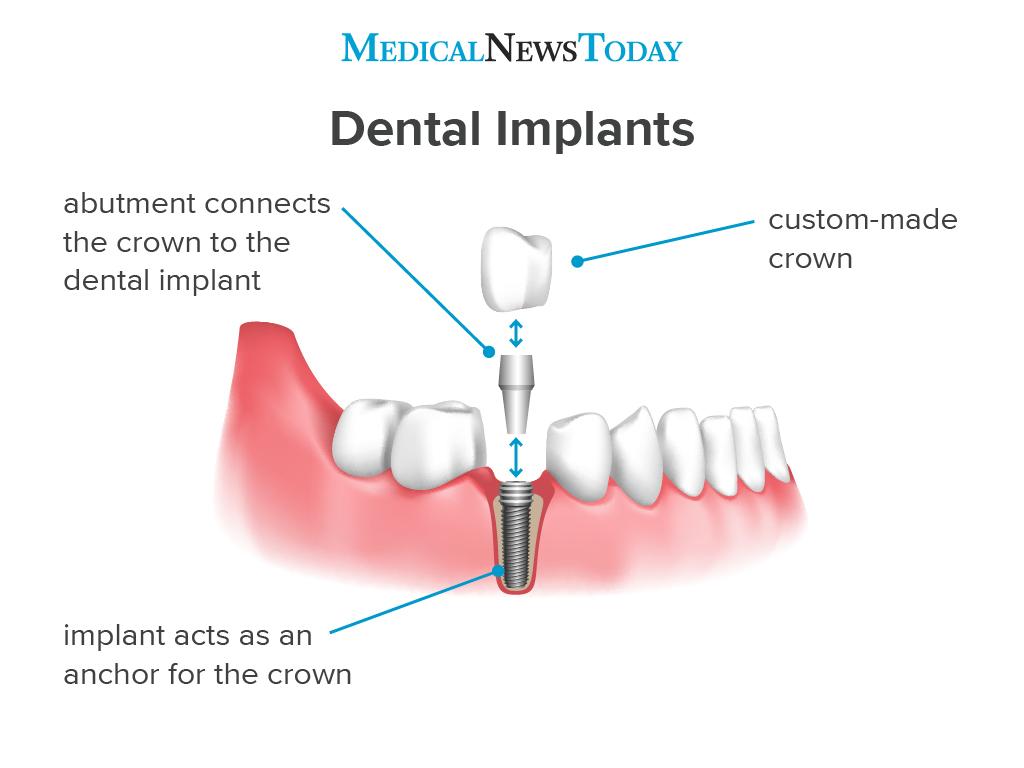The Basic Principles Of Dental Sense
The Ultimate Guide To Dental Sense
Table of ContentsExamine This Report about Dental SenseSome Known Incorrect Statements About Dental Sense Dental Sense - QuestionsThe 15-Second Trick For Dental Sense
are medical tools surgically implanted into the jaw to recover a person's capability to eat or their appearance. They supply assistance for synthetic (phony) teeth, such as crowns, bridges, or dentures. When a tooth is shed because of injury or disease, a person can experience issues such as quick bone loss, faulty speech, or changes to chewing patterns that cause discomfort.Dental dental implant systems include a dental implant body and oral implant joint and may also consist of an abutment addiction screw. Same day dental implants. The dental implant body is surgically placed in the jawbone in place of the tooth's origin. The dental implant joint is usually connected to the dental implant body by the joint fixation screw and expands with gum tissues into the mouth to sustain the connected man-made teeth
(https://dentalsense1.mystrikingly.com/blog/transform-your-smile-with-dental-implants-root-canal-procedures-and)Framework of The Dental Implant System choosing oral implants, talk with your oral copyright concerning the possible benefits and risks, and whether you are a prospect for the treatment. Things to take into consideration: Your overall wellness is a crucial consider figuring out whether you are a good prospect for oral implants, how much time it will require to recover, and the length of time the implant might stay in area.
Cigarette smoking may influence the recovery process and lower the long-lasting success of the dental implant. The healing procedure for the implant body might take numerous months or longer, during which time you typically have a momentary abutment instead of the tooth. the dental implant procedure: Very carefully comply with the oral health instructions offered to you by your dental provider.
The Main Principles Of Dental Sense
Implant failure can lead to the demand for one more medical treatment to repair or change the dental implant system. Recovers the ability to eat Restores aesthetic appearance Aids maintain the jawbone from diminishing as a result of bone loss Maintains the health of the surrounding bone and gum tissues Aids keep adjacent (nearby) teeth steady Boosts lifestyle Damage to surrounding natural teeth during dental implant placement Injury to the surrounding tissues throughout surgery, such as sinus perforation Injury during surgical treatment (for instance, crack of bordering jawbone) Poor feature, such as seeming like the teeth do not bite together usually An experience that the tooth hangs or turning in position arising from a joint screw loosening up Implant body failing (looseness of the implant body) due to systemic infection, which may be much more likely in individuals with unrestrained diabetes mellitus as a result of neighborhood infection in bone and gums supporting the dental implant body as a result of postponed healing, which may be most likely in patients that smoke Trouble cleansing the periodontals around the implant, resulting in poor dental health Unattended gum condition Post-surgical pins and needles due to nerve impingement or damages Always inform healthcare suppliers and imaging professionals that you have oral implants before any type of magnetic resonance imaging (MRI) or x-ray treatments.
FDA is not mindful of any type of unfavorable events reported for MRI or x-ray procedures with oral implants. Dental implants systems are usually made of materials that adhere to global consensus standards of the International Company for Standardization (ISO) or ASTM International. These criteria have information of what makes a risk-free material.

An oral implant is a structure that replaces a missing out on tooth. With screw-like devices, the doctor inserts an implant into the jawbone, and it functions as a support for a man-made tooth, called a crown. A tool called an abutment connects the artificial tooth to the dental implant. The crown is tailor-made to fit the individual's mouth and match the shade of their teeth.
Getting My Dental Sense To Work
Some individuals are not eligible for oral implant surgical treatment. It is for dental doctors to operate individuals with: acute illnessuncontrollable metabolic best site diseasebone or soft tissue condition or infectionIf these problems are dealt with, an individual can have the surgical procedure. In, dental doctors refrain from operating individuals with: If individuals with any of the above undertake oral implant surgery, there is a greater danger of the dental implant stopping working.

Dental dental implant surgery is a tailored process. Give you time to heal. Attach the message and final crown, bridge or denture.
Next off, your cosmetic surgeon will thoroughly place the oral implant right into your jaw. If your implant is near the front of your mouth, your dental practitioner will certainly make a short-term tooth for you to wear till you recover.
Dental Sense Fundamentals Explained
Your copyright can inform you what to expect in your circumstance. Throughout the healing stage, your jawbone ought to fuse to the oral implant. This process, called osseointegration, is essential for stability and lasting success. This procedure can take anywhere from three to 9 months. In some situations, it might take much longer.
Once your dental implant heals, your dentist can connect the joint (tiny port post) and your last restoration (crown, bridge or denture). This normally takes concerning one hour to complete and may need a 2nd small surgery. You shouldn't really feel any kind of discomfort during your dental implant procedure since your service provider will make use of drug to numb your gums.